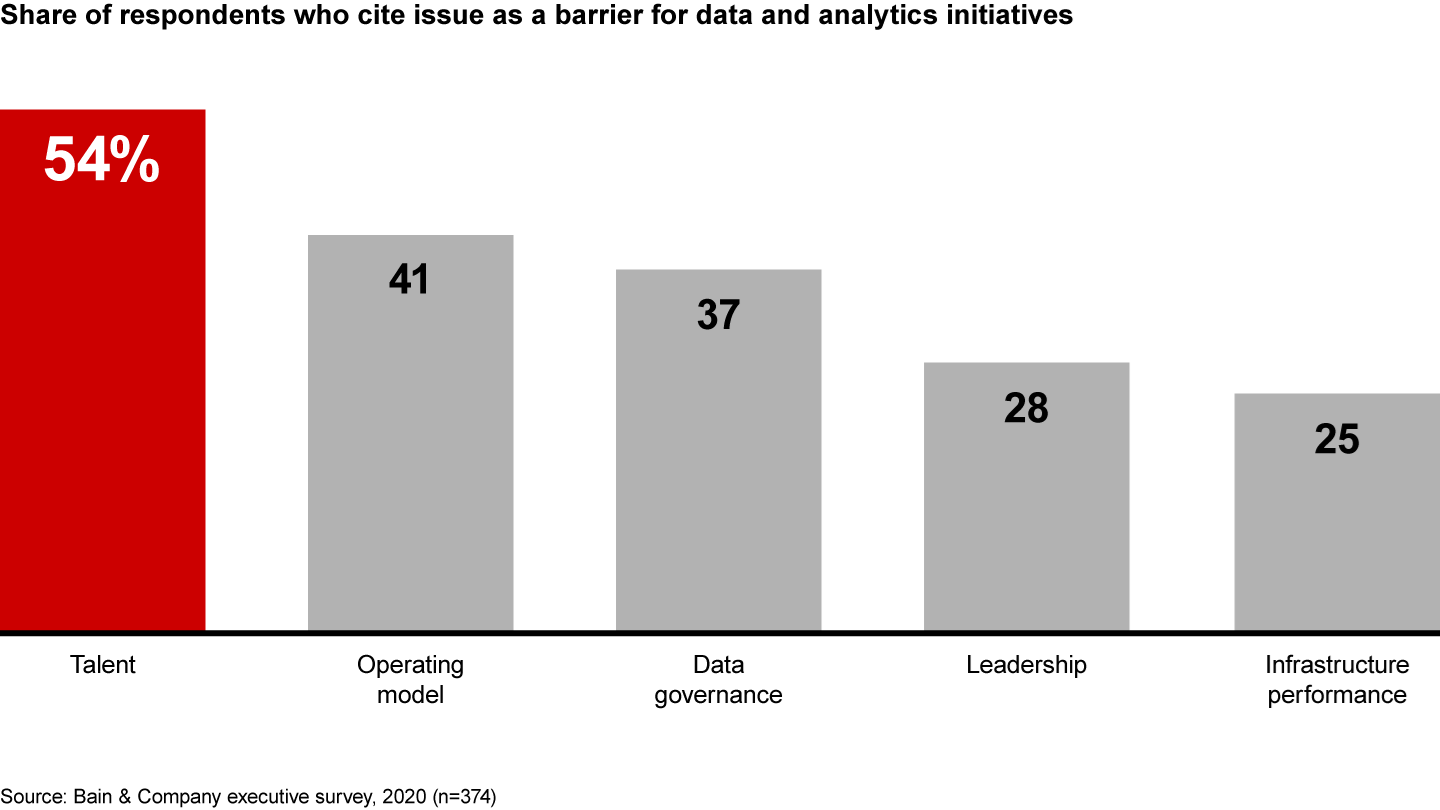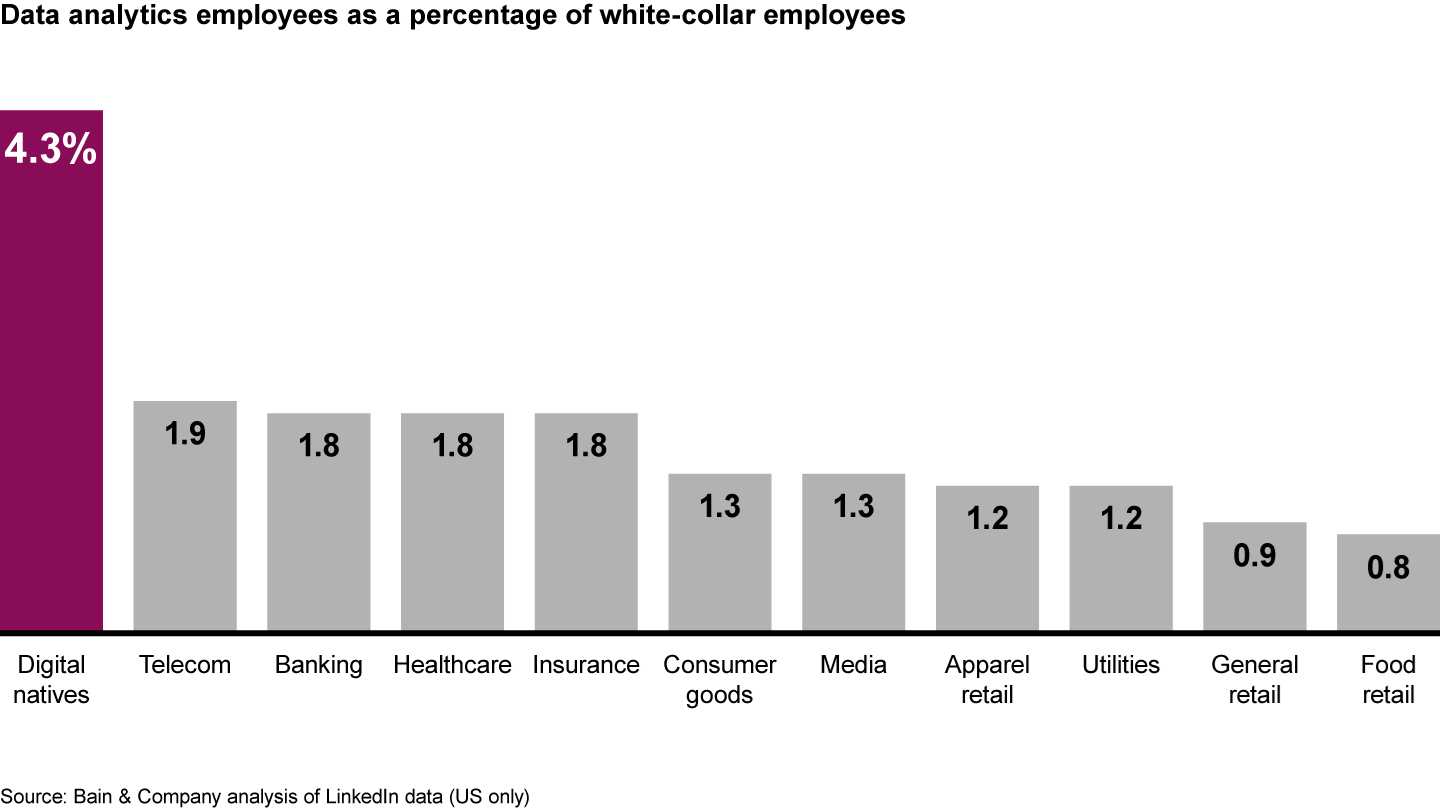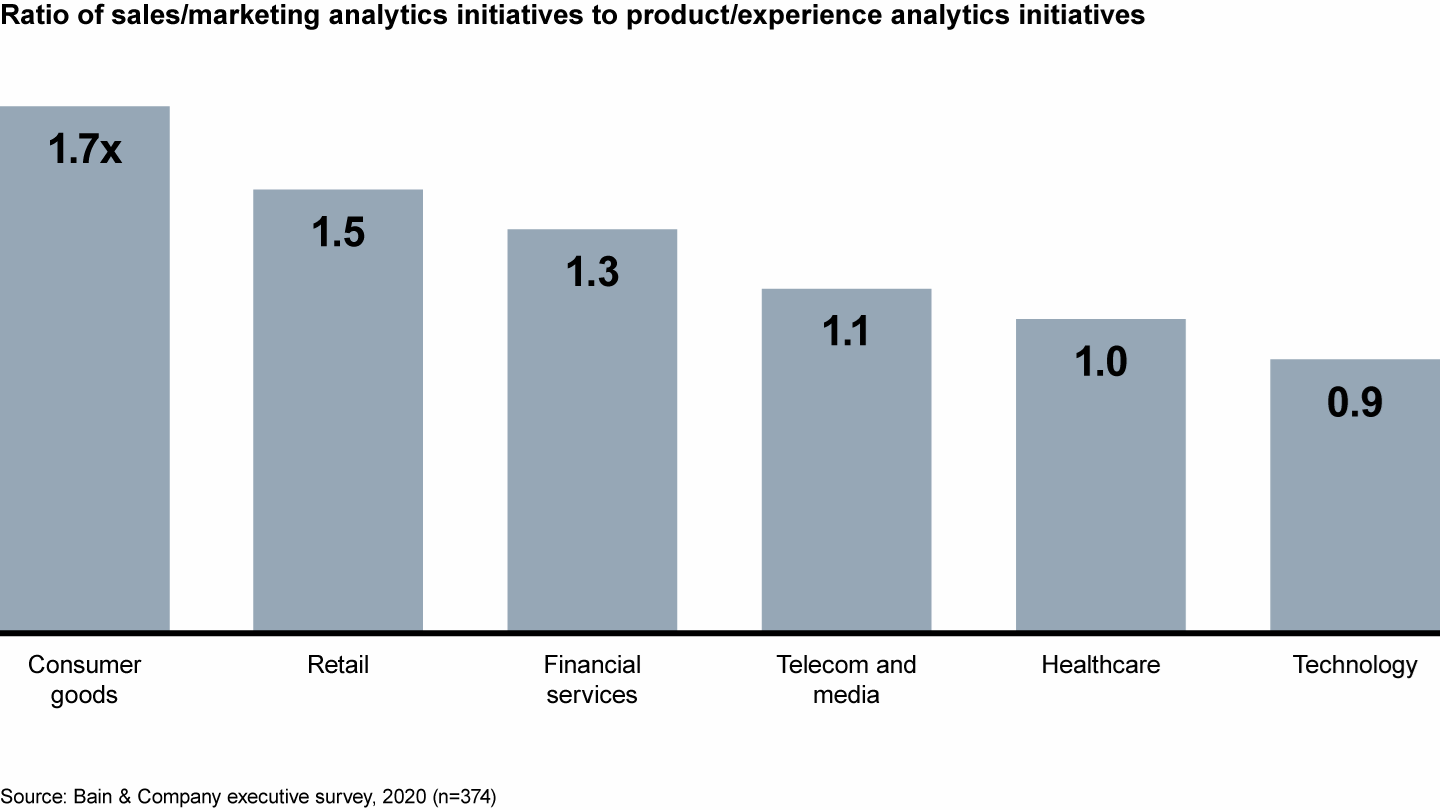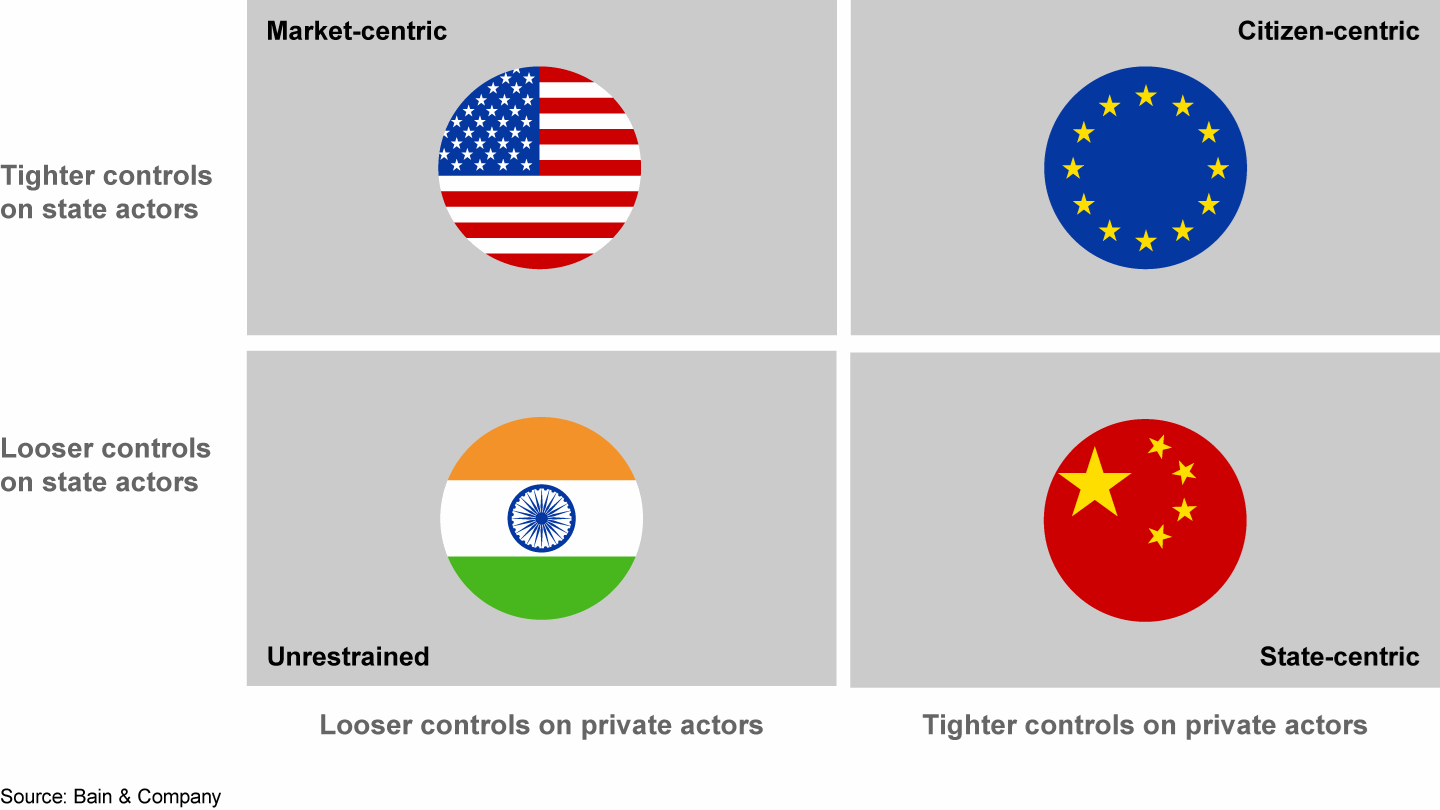Brief

For the last decade or so, we have been living through a consumer data gold rush. When any of us makes a purchase, goes for a run or connects with friends via social media, we leave a digital trail that is widely visible across the economy. Never has such intimate knowledge of consumers been within such easy grasp of businesses.
Thanks to ever cheaper and more powerful data-collection and storage tools, firms have amassed troves of consumer data and pull in more every day. Yet they’re finding that collecting data and managing it effectively pose two very different challenges. Not only have many companies been caught flatfooted by mounting concerns about privacy and security, but they are also struggling to use data to its full potential by creating lasting value for customers, employees and society at large.
It says something that companies are more likely to annoy their customers by collecting data than to delight them. They too often default to monetizing valuable customer relationships through advertising and cross-promotion rather than investing in the kinds of rich insights that translate into superior products, services and experiences. Consumers are inundated with emails and texts from service providers hailing the next “opportunity.” They are bombarded with incomprehensible privacy notices and endless survey requests. At best, these annoyances disappear into the noise we all endure daily. At worst, they create a slow burn that eventually poisons a firm’s customer relationships.
The real promise of consumer data is to deepen those relationships. Managed well, data gives companies a better understanding of who their best customers are and what they really want—even before the customer knows, in many cases. Large companies have always struggled to maintain connection with their customers as they grow and become more complex. But data and analytics can bridge that gap. They enable firms to marry the benefits of scale and intimacy in ways that build long-term loyalty and trust.
For the companies that master it, moving from a short-term monetization model to a long-term relationship-building model will increasingly provide a competitive edge. The winners will build strong data management into a critical brand attribute and advantage, which will be especially important as governments around the globe actively consider how to regulate the flow of consumer information.
We are on the verge of a new phase in the data game—one that will require a significantly more rigorous and comprehensive playbook for using data productively and securely. The most effective data strategies will focus on three key areas:
- Investing in delighting your customers (not milking them)
- Closing the trust gap
- Gaining advantage through ecosystems
Invest in delighting your customers
The same forces that have fueled the explosion of consumer data—the emergence of the Internet, advances in computing power and the proliferation of connected devices—have also elevated our expectations for products and services. Consumers now want an experience that is personalized, seamless and continuously improving. Consumer data and analytics can be a powerful enabler of deeper customer intimacy. But they have to be treated as a critical corporate asset, not just an afterthought.
Wind back the clock a few years, and you’ll recall that data was once hailed as “the new oil.” Firms rushed out to gather as much as possible, buoyed by a sharp decline in the cost of storage. Often there was no clear vision for how this data would be used, only the belief that it was of immense value and worth amassing, regardless of any risk to consumers. Yet, as Google’s chief economist, Hal Varian, once noted, data, like oil, must be refined to be of much use. In the rush to accumulate consumer information, many firms have failed to build the capabilities and structures they need to analyze the data and use it strategically. The result, according to Forrester, is that around two-thirds of all the consumer data companies collect ultimately goes unused.
Bain & Company research indicates that a lack of talent is by far the leading barrier to tapping data’s value (see Figure 1). This is especially true at older companies: LinkedIn data shows that, compared with traditional firms, digital natives have more than twice as many white-collar employees devoted to data and analytics (see Figure 2).
Talent is the biggest barrier to maximizing value from data


Digital natives deploy much more data analytics talent than traditional companies do


It’s not just about hiring more data scientists. As with any asset that is central to a company’s brand, data needs to be managed across the organization by someone accountable for results. It also needs to be curated and maintained by data engineers, data architects, database managers, data analysts and others. These people must then interact with teams on the business side to translate analytics into action (through human-centered design, for instance). The evidence suggests traditional firms are underinvesting in all of these areas.
It’s no surprise, then, that companies across industries tend to lean on monetization initiatives more than they do on efforts to deepen customer relationships and build loyalty—strategies that typically take more time and investment to nurture. Our research shows that most firms invest far more in using data to squeeze immediate revenue out of customers than in using insights to serve them better (see Figure 3). The result is a mismatch between the most mature use cases for data and the use cases consumers value most.
Companies clearly favor monetization initiatives over using analytics to better serve customers


Achieving a better balance requires a step change in how you think about data. It means developing an operating model that harnesses data and analytics across the organization to capture value-creating customer insights. Data analysts, the IT organization, and frontline functions such as sales, marketing and product development all need to come together to innovate solutions and new data-enabled ways to meaningfully improve customers’ lives.
Netflix, for instance, gathers extensive data on its subscribers’ viewing and search habits, but uses it primarily to make decisions about what programming to buy or develop. Big data helps it take big risks in an area (entertainment) notorious for flameouts. “We really think about members’ satisfaction and how many people are going to watch it compared to how much it costs to produce,” co-CEO Reed Hastings recently said. He added: “Our members love somebody who does one thing extremely well.”
What’s clear is that we’re just getting started when it comes to using data to its full potential. The most proactive companies are taking a “future-back” approach by looking at the core Elements of Value® that matter most to their customers and crafting solutions that address them directly. These companies aren’t just enhancing existing products and experiences; innovation in data and analytics is also enabling them to expand their business models and markets in significant ways.
Consider healthcare providers that are developing wearable and home-based sensors that can detect early signs of cancer, diabetes or heart disease. This data allows the provider to take preemptive action and suggest interventions that prevent unnecessary treatment and often save lives.
A similar opportunity exists in the banking world. Many large financial services firms are beset by digital-native fintech competitors. As a result, they are shifting away from a strategy based on aggressive selling of financial products (some of which the upstarts can provide more efficiently anyway) and moving toward a model based on managing financial health. Instead of trying to meet quarterly earnings by pushing another loan or checking account, organizations are using data and analytics to provide much richer advisory services. Knowing their customers better helps them suggest ways to build the kinds of custom financial plans and solutions that lead to long-term, sticky relationships with the institution.
Close the trust gap
While amassing consumer data with little regard for need or consumer benefit, many firms have unwittingly exposed themselves to its increasingly radioactive nature. Once seen as a fringe issue, data privacy has now moved squarely into the mainstream of consumers’ concerns.
According to a survey from the Pew Research Center, 70% of Americans feel their personal information is less secure than it was five years ago, 81% feel they have little or no control over the data that companies collect on them, and 79% say they are “somewhat” or “very” concerned about how companies use the data they collect. Americans aren’t alone, either—Bain surveyed 8,000 consumers in the US, UK, China and India and found that, across all geographies, over 50% of consumers feel “extremely” or “very” concerned about potential misuses of their data.
The wheels of regulation have begun turning worldwide, spurred by high-profile security breaches, misuse of data by bad actors, and covert collection and usage practices. New constraints and penalties are emerging across most major markets. To better understand the evolving regulatory landscape, it is helpful to differentiate between limits imposed on firms and limits imposed on the state. Four regulatory archetypes follow from this distinction (see Figure 4).
Four emerging regulatory archetypes


In markets such as the US, restrictions on companies remain relatively limited, at least at the federal level. Restrictions on the state, meanwhile, have been more robust since the controversy around National Security Agency surveillance. In China, by contrast, the state has been able to collect and use data relatively freely. Yet Chinese companies face an emerging regulatory framework that might limit their ability to tap consumer data.
Across most geographies, the gravitational pull remains toward heavier constraints on firms. Already, fines and legal judgments related to data privacy or data security malfeasance have amounted to hundreds of millions of dollars in the US and EU. The EU’s General Data Protection Regulation (GDPR) is setting the pace for regulation, and many other jurisdictions are instituting laws that borrow heavily from its key principles, including the California Consumer Privacy Act and India’s Personal Data Protection Bill, which is under consideration.
And GDPR-type policies may not be the end of the story. Over 50% of the UK residents we surveyed still regard current regulations as either “very weak” or “weak.” In China and India, where data protection regulation is less mature, this share is considerably lower, suggesting regulatory attention may precede changes in consumer sentiment, rather than the other way around. As regulators start to take action, consumers start to take notice.
Multiple other regulatory options are being debated around the globe: new rules that force large firms to make their data more accessible to support innovation; new data trust models that place ownership and control of data more explicitly in the hands of consumers; even the possible forced breakup of some businesses that are deemed to hold too much sway over the data ecosystem. Where exactly we end up will ultimately be settled in the political realm. But it’s safe to assume that significant change is on the horizon.
Many firms will find that they are woefully unprepared. One glaring example: the typical privacy policy, which remains so long and complex that most consumers find it utterly incomprehensible. With many privacy policies clocking in at over 4,000 words, consumers simply cannot (or will not) absorb that information. The reality is that few enterprises today actually understand what consumer data they possess or who has access to it, let alone how to control that access. They simply don’t have the data architectures and tools needed to keep track. No wonder that security breaches occur with unnerving regularity. Recent Bain research on cybersecurity found that the majority of firms overestimate their own cybersecurity maturity by a significant margin.
Unintelligible privacy notices, lax security protocols, poor data awareness and control—all are symptoms of something bigger. They reflect a fundamental misunderstanding of how critical trust has become to brand and competitiveness. Most consumers are willing to hand over their data in a fair exchange for products, services and experiences they value. But they also demand control, transparency and security, and regulators are enshrining these demands in legal rights and economic penalties for denying those rights. Firms that fail to deliver against these expectations risk tarnishing their brand among the customers, investors and talent they need to thrive.
The opposite is also true, however, which presents an important opportunity. Handling data dependably establishes trust and burnishes your brand, so it pays to invest in using data both strategically and responsibly.
Apple, for instance, has chosen to place privacy and data protection at the center of its value proposition. Recent moves into health devices and credit cards were made possible by consumer confidence in the company’s leading encryption technology and its public commitment to users’ data privacy. At its 2020 Worldwide Developers Conference, Apple announced a suite of new privacy tools, one of which lets users disable ad tracking on an app-by-app basis, a first for a smartphone maker. The move drew immediate opposition, however. Facebook and several advertising organizations complained the feature would cut into ad revenue for app developers. The conflict illustrates the challenges that lie ahead as companies seek to resolve competing agendas across an ecosystem.
Treating trust as a brand attribute is the best way to sort through these issues in favor of customers. It changes the conversation internally. Instead of viewing compliance as a check-the-box exercise, or cybersecurity and privacy as cost centers, firms recognize that these things are critical aspects of winning with customers. They appoint a chief data officer with clear accountability for privacy; some even anoint a chief privacy officer. They establish companywide data-governance principles and write privacy policies their grandparents could understand. They do an honest accounting of the data they are collecting and whether collecting it will ultimately benefit customers. They design systems and tools that allow them to be intelligent stewards of data access, transmission, usage and storage.
The guiding principle is simple: Are we building and using this information asset to better meet the long-term needs of our customers? Or are we serving some short-term monetization agenda and holding onto data haphazardly, just in case we need it someday? If the answer to the second question is yes, you’re increasingly putting your brand at risk.
Gain advantage through ecosystems
One way data is not like oil is that it can be infinitely reused and repurposed. Data sets can also be combined with others to create value none possess on their own. In fact, much of the analytic innovation we see today comes not from mining existing data sets within stovepiped systems, but from creating new combinations to solve problems that have defied solution otherwise. This often involves tapping other parts of your enterprise or reaching out to third parties and building a data ecosystem.
Tapping into an ecosystem of data partners can create value in two ways.
Building scale. In most applications, data generates value along an S curve. That is to say, it needs to pass a certain threshold of scale to be effective. For example, an Internet search engine requires billions of searches and clicks across a wide range of topics before it starts to deliver relevant results. Building scale, however, can be difficult for a company in isolation. For use cases that require a high data threshold to be competitive, turning to partnerships often offers a faster and more efficient path to value.
JD.com’s experience in the Chinese e-commerce market demonstrates this well. Back in 2013, JD was struggling to stay relevant against a runaway Alibaba. The latter enjoyed a scale advantage that created a virtuous cycle: More sellers and more buyers led to more data and better targeting, which led to more sellers, and so on. But then JD partnered with Internet platform Tencent, which has a full suite of mobile applications. That allowed JD to directly reach Tencent’s customers and take advantage of its vast data assets to improve the relevance of JD’s product suggestions. The results have been impressive: JD has grabbed a significantly larger share of the Chinese e-commerce market since it established the partnership.
Building scope. Collecting data from beyond a firm’s traditional boundaries can also create significant value for companies and their customers. Consider Discovery’s Vitality health insurance product, which pulls in tracking data from third parties such as Fitbit and Garmin. That allows it to provide recommendations to insurance customers and grant reward points based on healthy behavior. The result is a win-win: improved health outcomes for customers and reduced claims costs for the insurer. Discovery is also developing an app that uses data and machine learning to predict a user’s risk of developing diabetes, hypertension or hyperlipidemia.
As accessing data beyond the four walls of the firm becomes increasingly critical, intermediaries will play an even more important role in the market. Today, through brokers such as LiveRamp and Epsilon, firms can draw on ecosystems to supplement their customer data with additional data streams. And with leading web browsers phasing out third-party cookies—which allow businesses to continue gathering data on users once they leave a website—dependence on external data sources such as these will only increase.
Yet as powerful as building scale and scope can be, these strategies rely heavily on trust to be effective. This cuts two ways. First, nobody will want to partner with your company if it hasn’t earned a strong reputation as a trusted counterparty. By the same token, whom you choose to partner with has major implications for your brand and reputation. If not managed well, open data ecosystems can exacerbate customers’ concerns about how you’re using their data. Hard-earned trust is only as secure as the weakest link in the chain.
The good news is that the market is generating solutions to help companies understand and manage risk more effectively. Witness the explosive growth of new services and tools that assess and monitor not just the enterprise’s cybersecurity and privacy posture, but also the integrity of its ecosystem partners. Emerging standards like Solid and myriad advocacy efforts are proposing alternative models for organizing the consumer data ecosystem. New intermediaries such as Inrupt and the Data Dividend Project hope to increase the control consumers have over companies and their ecosystems through concepts like data trusts, as well as legal enforcement.
Ultimately, it is up to firms to manage the risk. Either they zealously guard their trusted reputation among both customers and partners or risk getting cut off from vital sources of outside data.
Why is this so hard?
The truth is, none of what we’re talking about here is particularly surprising. Why, then, do so many businesses struggle to get it right? From our conversations with executives, we have identified five common roadblocks that stand in the way of getting the most out of consumer data:
- No ownership. While firms acknowledge the importance of data, their organizational structures often do not reflect this. Roles and responsibilities around consumer data are frequently ill defined, overlapping or nonexistent. Without a C-suite leader responsible for a firm’s data strategy and governance, it is unlikely to receive the attention and resources required.
- Balkanized data. Data often resides within many disparate parts of an organization, without one consolidated view of what information exists or how it could be brought together to deliver a superior proposition for customers. Appointing a chief data officer is helpful but rarely sufficient on its own. Instituting an effective data operating model that clarifies the end-to-end collection, management and application of data throughout the organization is a prerequisite for success.
- No experience. Firms face fierce competition for data and analytics talent, and many are failing to attract and retain the individuals they need. Top talent is demanding more than ever from employers―more flexibility, more learning, more teaming, more clarity of purpose. Old models for attracting, managing and developing talent are no longer cutting it. Firms must adopt a new deal for talent in order to secure and retain the data and analytics capabilities they need to stay in the game.
- Closed architectures. As we move from an analog to a digital world, opportunities for firms to tap into the resources of a wider ecosystem have multiplied rapidly. Yet many firms lack the necessary modularity in their technology stack and operational processes to weave in external sources successfully. They also tend to lack management control over their data architecture and assets. Before they can fully tap data ecosystems, many firms will need to confront these legacy architectures.
- Different markets, different rules. For firms that operate across multiple jurisdictions, the diverging pace―and sometimes direction―of data regulation creates significant challenges. An extreme example was President Donald Trump’s executive order in August giving Chinese company ByteDance a 90-day deadline to divest its American assets and any data collected by its subsidiary, TikTok. For many multinationals, the most stringent regime may well end up setting the standard, as they seek to avoid the cost and complexity that comes from fragmented privacy practices. That posture explains Microsoft’s May 2018 announcement that it would extend data subject rights to all personal computer customers worldwide.
We are now reaching an inflection point when it comes to consumer data. In the next decade and beyond, it will become increasingly central to competitive advantage, yet its use will also be bound by shifting societal attitudes and regulation. Many companies and industries are unprepared for this next phase, having underinvested in the talent, capabilities, and structures needed to delight customers, build trust and safely tap ecosystems to acquire the data they need.
It’s time for firms to revisit their data strategy and capability roadmap to ensure they are fit for the next phase. Those that stand still will quickly fall behind.
Elements of Value® is a registered trademark of Bain & Company, Inc.